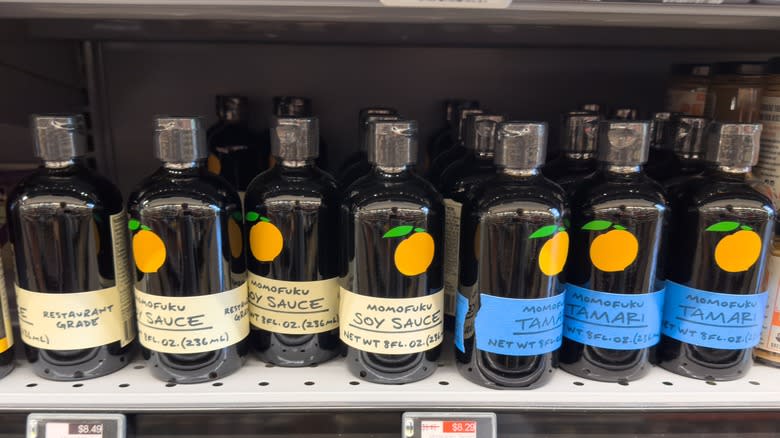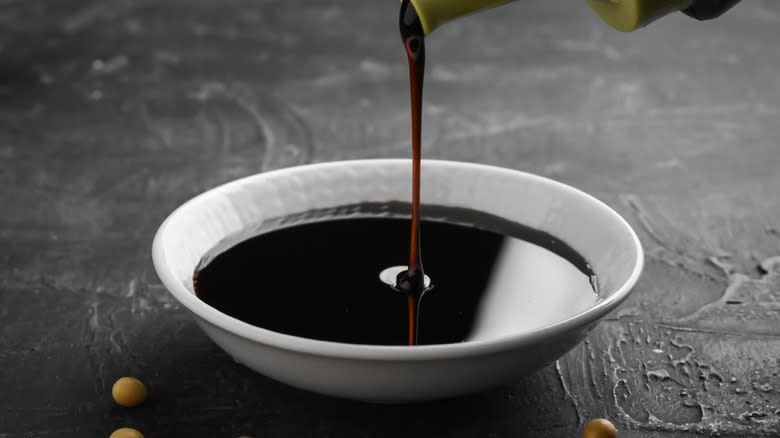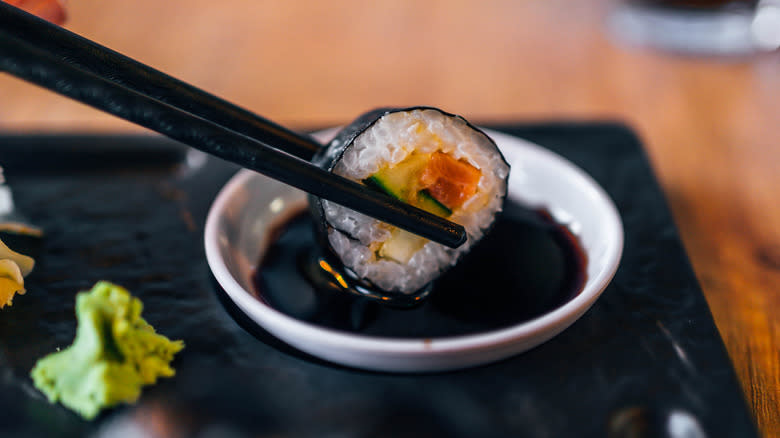Is There A Difference Between Tamari And Soy Sauce?

The most obvious way to add saltiness to a dish is, well, with salt, but it's far from the only method. One of the most popular (and appetizing) options is soy sauce, a liquid condiment made of fermented soybeans. There are all sorts of delicious ways to use soy sauce, from dipping sauces to glazes to marinades. But while you're doubtless familiar with soy sauce (an industry worth $35.1 billion in 2022), you might've also heard of tamari. So what is tamari? Is it just another name for soy sauce?
Not at all. Tamari is an entirely separate product with its own strengths and weaknesses that set it apart from soy sauce. It can be a little confusing -- both are made from soybeans, they look very similar, and you can generally swap one for another in recipes. But there are plenty of differences, from texture to taste to how they're each made. Although they may be largely interchangeable, there are still things to know about why you might pick one over the other.
Read more: 5 Rice Brands To Buy, And 5 To Avoid
The Two Are Made From Different Ingredients

Soy sauce and tamari have distinctly different culturally significant origin stories. Soy sauce originated in China over 2,000 years ago and is still a common ingredient. It's also found in a number of East Asian cuisines, from Korea and Indonesia to Japan, although Chinese and Japanese soy sauces are different. Tamari, by contrast, was created in the eighth century and generally only appears in Japanese cuisine, where it's sometimes regarded as a subtype of soy sauce.
How they're made is different, too. Both are based around fermented soybeans, but from there, they diverge significantly. With soy sauce, steamed soybeans are combined with roasted, crushed wheat and then allowed to ferment in brine. The resulting mixture is pressed through cloths, creating soy sauce.
By contrast, tamari consists of pressed liquid from miso paste, which is then combined with rice instead of wheat. Tamari is also typically, though not always, allowed to ferment for a year or longer, which results in noticeably different characteristics from soy sauce.
Soy Sauce Is Saltier, While Tamari Packs More Umami

Because tamari is typically allowed to ferment for longer than soy sauce, it tends to be thicker, with more of a rich umami flavor as compared to the saltier bite of soy sauce. There's also a mild difference in their appearance, as tamari tends to be darker. They're still similar enough that you can use them interchangeably in recipes, but you'll notice slightly different flavor profiles depending on whether you want umami or salt. Tamari might go better, for example, in a barbecue tofu where you want that deep umami taste, while soy sauce's thinner consistency and brighter, saltier flavor make it a far better choice for fried rice.
Nutritionally, the two are basically the same, with high sodium levels (which is the whole point). But there's one last key difference: Because tamari is made with rice instead of wheat, it's gluten-free, so for anyone with Celiac disease, tamari is generally better than soy sauce. You should always check the label, though, because there are times when manufacturers might sneak some wheat in there.
Read the original article on Daily Meal

